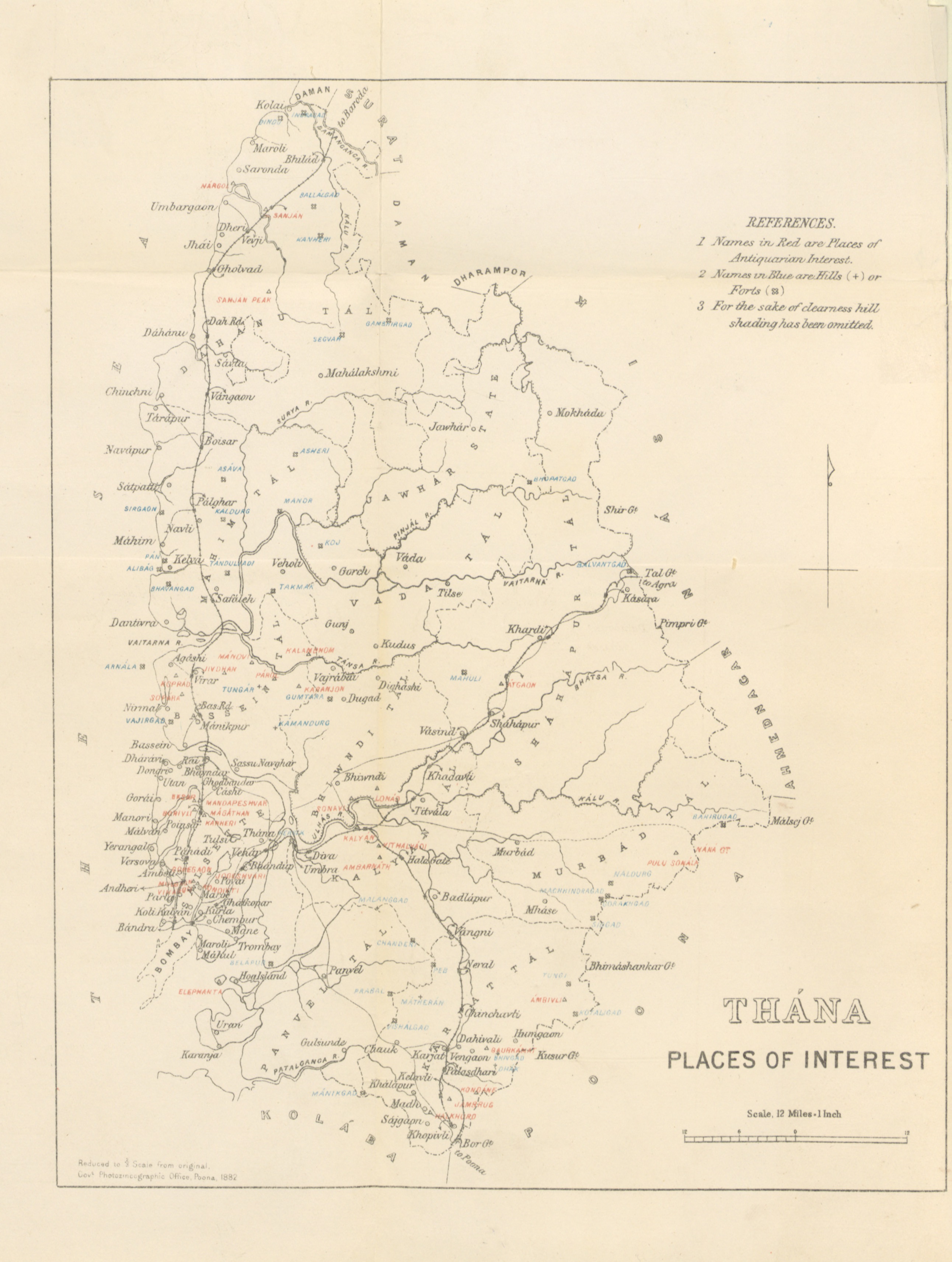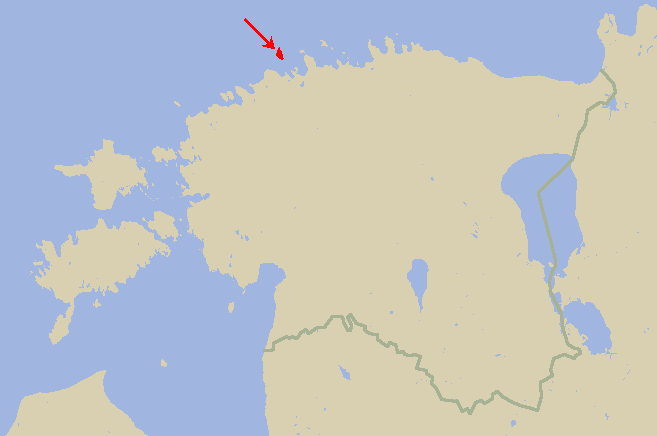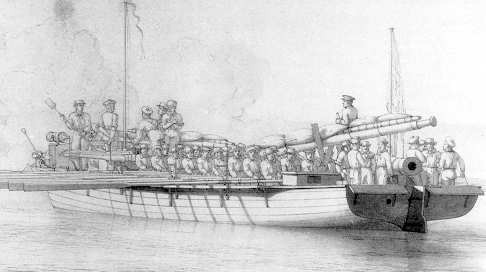|
HMS Salsette (1805)
HMS ''Salsette'' (or ''Salcette'') was a ''Perseverance''-class fifth-rate frigate of a nominal 36 guns, launched in 1805. The East India Company built her for the Royal Navy at the company's dockyards in Bombay. She was the Navy's first teak-built ship. She served in the Indies, the Baltic, the Mediterranean and the Home Station, taking several prizes and seeing a limited amount of action. She did participate in a single-ship action in the Baltic that was notable for the other, much smaller, vessel's heroism. ''Salsette'' was laid up after the end of the Napoleonic Wars but then went on to serve in a number of support functions until the Admiralty had her broken up in 1874. Naming Built and launched as HMS ''Pitt'', she was renamed to ''Salsette'' on 19 February 1807. She is not to be confused with her sister ship , which was named ''Salsette'' prior to her acquisition by the Royal Navy, which renamed her ''Pitt''. This ''Pitt'' became ''Doris'' on 26 October 1807. For a w ... [...More Info...] [...Related Items...] OR: [Wikipedia] [Google] [Baidu] |
United Kingdom Of Great Britain And Ireland
The United Kingdom of Great Britain and Ireland was a sovereign state in the British Isles that existed between 1801 and 1922, when it included all of Ireland. It was established by the Acts of Union 1800, which merged the Kingdom of Great Britain and the Kingdom of Ireland into a unified state. The establishment of the Irish Free State in 1922 led to the remainder later being renamed the United Kingdom of Great Britain and Northern Ireland in 1927. The United Kingdom, having financed the European coalition that defeated France during the Napoleonic Wars, developed a large Royal Navy that enabled the British Empire to become the foremost world power for the next century. For nearly a century from the final defeat of Napoleon following the Battle of Waterloo to the outbreak of World War I, Britain was almost continuously at peace with Great Powers. The most notable exception was the Crimean War with the Russian Empire, in which actual hostilities were relatively ... [...More Info...] [...Related Items...] OR: [Wikipedia] [Google] [Baidu] |
Thane
Thane (; also known as Thana, the official name until 1996) is a metropolitan city in Maharashtra, India. It is situated in the north-eastern portion of the Salsette Island. Thane city is entirely within Thane taluka, one of the seven talukas of Thane district; also, it is the headquarters of the namesake district. With a population of 1,841,488 distributed over a land area of about , Thane city is the 15th most populated city in India with a population of 1,890,000 according to the 2011 census. Located on the northwestern side of the state of Maharashtra, the city is an immediate neighbour of Mumbai city and a part of the Mumbai Metropolitan Region. Etymology and other names The ancient name of Thana was . It appears as in early medieval Arab sources. The name Thane has been variously Romanised as Tana, Thana, Thâṇâ, and Thame. Ibn Battuta and Abulfeda knew it as KukinTana; Duarte Barbosa as TanaMayambu. Before 1996, the city was called 'Thana', the British sp ... [...More Info...] [...Related Items...] OR: [Wikipedia] [Google] [Baidu] |
Liepāja
Liepāja (; liv, Līepõ; see other names) is a state city in western Latvia, located on the Baltic Sea. It is the largest-city in the Kurzeme Region and the third-largest city in the country after Riga and Daugavpils. It is an important ice-free port. The population in 2020 was 68,535 people. In the 19th and early 20th century, it was a favourite place for sea-bathers and travellers, with the town boasting a fine park, many pretty gardens and a theatre. Liepāja is however known throughout Latvia as "City where the wind is born", likely because of the constant sea breeze. A song of the same name ( lv, "Pilsētā, kurā piedzimst vējš") was composed by Imants Kalniņš and has become the anthem of the city. Its reputation as the windiest city in Latvia was strengthened with the construction of the largest wind farm in the nation (33 Enercon wind turbines) nearby. The coat of arms of Liepāja was adopted four days after the jurisdiction gained city rights on 18 March 16 ... [...More Info...] [...Related Items...] OR: [Wikipedia] [Google] [Baidu] |
Striking The Colours
Striking the colors—meaning lowering the flag (the " colors") that signifies a ship's or garrison's allegiance—is a universally recognized indication of surrender, particularly for ships at sea. For a ship, surrender is dated from the time the ensign is struck. In international law "Colours. A national flag (or a battle ensign). The colours . . . are hauled down as a token of submission." International law absolutely requires a ship of war to fly its ensign at the commencement of any hostile acts, i.e., before firing on the enemy. During battle there is no purpose in striking the colors other than to indicate surrender. It was and is an offense to continue to fight after striking one's colors, and an offense to continue to fire on an enemy after she has struck her colors, unless she indicates by some other action, such as continuing to fire or seeking to escape, that she has not truly surrendered. For this reason, striking the colors is conclusive evidence of a surrende ... [...More Info...] [...Related Items...] OR: [Wikipedia] [Google] [Baidu] |
Naissaar
Naissaar ( sv, Nargö; german: Nargen) is an island in Estonia. It is situated in the Gulf of Finland, northwest of the capital city Tallinn, and is administratively part of the Viimsi parish. The island covers an area of . It is long and wide, and lies about from the mainland. The highest point on the island is Kunilamägi, which is above sea level. The island consists predominantly of coniferous forest and piles of stones and boulders. In 2020, the island had a population of 17; in 2011 the island had 35 or so permanent residents and some summer residents. Administratively the island is divided into three villages: Lõunaküla (Storbyn), Tagaküla (Bakbyn), and Väikeheinamaa (Lillängin). Until World War II, the island's native population numbered about 450 people of Estonian-Swedish origin. However, all of the local residents fled from Naissaar to escape the 1944 Soviet invasion of Estonia. During the 1944–1991 Soviet occupation the island was used by the military ... [...More Info...] [...Related Items...] OR: [Wikipedia] [Google] [Baidu] |
Galliot
A galiot, galliot or galiote, was a small galley boat propelled by sail or oars. There are three different types of naval galiots that sailed on different seas. A ''galiote'' was a type of French flat-bottom river boat or barge and also a flat-bottomed boat with a simple sail for transporting wine. Naval vessels * Mediterranean, (16th–17th centuries) : Historically, a galiot was a type of ship with oars, also known as a half-galley, then, from the 17th century forward, a ship with sails and oars. As used by the Barbary pirates against the Republic of Venice, a galiot had two masts and about 16 pairs of oars. Warships of the type typically carried between two and ten cannons of small caliber, and between 50 and 150 men. It was a Barbary galiot, captained by Barbarossa I, that captured two Papal vessels in 1504. * North Sea (17th–19th centuries) : A galiot was a type of Dutch or German merchant ship of 20 to 400 tons ( bm), similar to a ketch, with a rounded fore and aft ... [...More Info...] [...Related Items...] OR: [Wikipedia] [Google] [Baidu] |
Tallinn
Tallinn () is the most populous and capital city of Estonia. Situated on a bay in north Estonia, on the shore of the Gulf of Finland of the Baltic Sea, Tallinn has a population of 437,811 (as of 2022) and administratively lies in the Harju '' maakond'' (county). Tallinn is the main financial, industrial, and cultural centre of Estonia. It is located northwest of the country's second largest city Tartu, however only south of Helsinki, Finland, also west of Saint Petersburg, Russia, north of Riga, Latvia, and east of Stockholm, Sweden. From the 13th century until the first half of the 20th century, Tallinn was known in most of the world by variants of its other historical name Reval. Tallinn received Lübeck city rights in 1248,, however the earliest evidence of human population in the area dates back nearly 5,000 years. The medieval indigenous population of what is now Tallinn and northern Estonia was one of the last " pagan" civilisations in Europe to adopt Christia ... [...More Info...] [...Related Items...] OR: [Wikipedia] [Google] [Baidu] |
Møn
Møn () is an island in south-eastern Denmark. Until 1 January 2007, it was a municipality in its own right but it is now part of the municipality of Vordingborg, after merging with the former municipalities of Langebæk, Præstø, and Vordingborg. This has created a municipality with an area of and a total population of 46,307 (2005). It belongs to the Region Sjælland ("Zealand Region"). Møn is one of Denmark's most popular destinations for tourists with its white chalk cliffs, countryside, sandy beaches and the market town of Stege. In June 2017, UNESCO designated Møn as Denmark's first biosphere reserve, consisting of "a series of islands and islets in the southern Baltic Sea, over approximately 45,118 hectares (131,890 acres). Its landscapes include woodlands, grasslands, meadows, wetlands, coastal areas, ponds and steep hills." Location Møn is located just off the south-eastern tip of Zealand from which it is separated by the waters of the ''Hølen'' strait betwe ... [...More Info...] [...Related Items...] OR: [Wikipedia] [Google] [Baidu] |
Anglo-Russian War (1807-1812)
The Anglo-Russians were an English expatriate business community centred in St Petersburg, then also Moscow, from the 1730s till the 1920s. This community was established against the background of Peter I's recruitment of foreign engineers for his new capital, and generally cooperative diplomatic relations between the Russian and British empires. Some of the families were resident in Russia for several generations, though generally retaining UK citizenship and sending their children to be educated in England. Some lived there for so long that their English acquired a distinctive accent peculiar to Anglo-Russians. Russian people of English descent Notable Anglo-Russian families were built around the trading houses and businesses of the Cazalet family, - the Cazalet-Miller business empire including the Ebsworth family, and Whishaw family. One of the first Anglo-Russian families was established by Noah Cazalet (1757-1800), a silk weaver, settled in St Petersburg and expanded into the ... [...More Info...] [...Related Items...] OR: [Wikipedia] [Google] [Baidu] |
Gunboat War
The Gunboat War (, ; 1807–1814) was a naval conflict between Denmark–Norway and the British during the Napoleonic Wars. The war's name is derived from the Danish tactic of employing small gunboats against the materially superior Royal Navy. In Scandinavia it is seen as the later stage of the English Wars, whose commencement is accounted as the First Battle of Copenhagen in 1801. Background The naval conflict between Britain and Denmark-Norway commenced with the First Battle of Copenhagen in 1801 when Horatio Nelson's squadron of Admiral Parker's fleet attacked the Danish capital. This came as a basis of Denmark-Norway's policy of armed neutrality during the latter stages of the French Revolutionary Wars, where Denmark used its naval forces to protect trade flowing within, into and out of the Danish-Norwegian waters. Hostilities between Denmark-Norway and the United Kingdom broke out again by the Second Battle of Copenhagen in 1807, when the British attacked the Dan ... [...More Info...] [...Related Items...] OR: [Wikipedia] [Google] [Baidu] |
Governor Of Madras
This is a list of the governors, agents, and presidents of colonial Madras, initially of the English East India Company, up to the end of British colonial rule in 1947. English Agents In 1639, the grant of Madras to the English was finalized between the factors of the Masulipatnam (now Machilipatnam) factory (trading post), represented by Francis Day, and the Raja of Chandragiri. In 1640, Andrew Cogan, the chief of the Masulipatnam factory, made his way to Madras in the company of Francis Day and the English and Indian employees of the Masulipatnam factory. The Agency of Madras was established on 1 March 1640 and Cogan was made the first Agent. The official title was 'Governor of Fort St George' and the Governor was usually referred to as Agent. Cogan served in the post for three years and was succeeded by Francis Day. After four agents had served their terms, Madras was upgraded to a Presidency during the time of Aaron Baker. However financial considerations forced the compa ... [...More Info...] [...Related Items...] OR: [Wikipedia] [Google] [Baidu] |
Lord William Bentinck
Lieutenant General Lord William Henry Cavendish-Bentinck (14 September 177417 June 1839), known as Lord William Bentinck, was a British soldier and statesman who served as the Governor of Fort William (Bengal) from 1828 to 1834 and the First Governor-General of India from 1834 to 1835. He has been credited for significant social and educational reforms in India, including abolishing sati, forbidding women to witness the cremations on the ghats of Varanasi, suppressing female infanticide and human sacrifice. Bentinck said that "the dreadful responsibility hanging over his head in this world and the next, if… he was to consent to the continuance of this practice (sati) one moment longer." Bentinck after consultation with the army and officials passed the Bengal Sati Regulation, 1829. The challenge came from the Dharma Sabha which appealed in the Privy Council, however the ban on Sati was upheld. He reduced lawlessness by eliminating thuggee – which had existed for over 450 ... [...More Info...] [...Related Items...] OR: [Wikipedia] [Google] [Baidu] |







